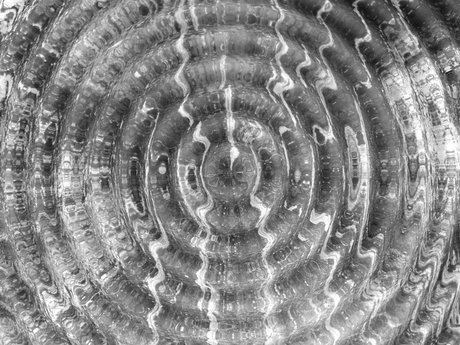Microalgae, bacteria and a bioreactor

Arsenic contamination of groundwater is one of the most common and horrific forms of contamination in the modern world - people are poisoned on a daily basis in more than 70 countries around the world.
Work by Australian researchers has resulted in the development of a new type of water filter that shows potential in ridding drinking water of arsenic. The filter combines microalgae with bacteria taken from soil contaminated with heavy metals to clean the water.
Arsenic poisoning
“Known as the ‘king of poisons’, arsenic has harmed humans more than any other toxic chemical in history,” said Bahar from the Cooperative Research Centre for Contamination Assessment and Remediation of the Environment (CRC CARE) and the University of South Australia (UniSA).
“It contaminates groundwater in countries including Bangladesh, India, the USA, South America, China, Thailand and Taiwan. Around 137 million people are poisoned daily by arsenic in their drinking water and food.”
Arsenic poisoning causes vomiting and diarrhoea, and long-term exposure can lead to cancer, diabetes, heart disease and death. Also, once polluted, the groundwater is difficult and expensive to clean up.
A symbiotic affair
To help save lives and improve global water security, Bahar and colleagues have developed a technology that uses different types of tenacious bacteria and microalgae to filter the water.
“Two forms of arsenic are commonly found in the environment: arsenic (III) and arsenic (V). Arsenic (III) is 60 times more toxic than the other form and is highly soluble, which makes it more difficult to remove, as it travels everywhere,” said Professor Megh Mallavarapu of CRC CARE and UniSA, principal supervisor of the research.
“The solution then is to convert arsenic (III) into the less toxic and less soluble form, making it easier to extract from the water,” Mallavarapu explained.
“Conventional technologies use chemicals to convert the arsenic, but this is expensive and often brings unwanted side effects. Scientists have also used bacteria for this task, but these bacteria require carbon to grow, so it’s unsustainable unless we keep feeding the bacteria.”
The CRC CARE researchers have found particular types of bacteria and microalgae that can sustain each other.
“We found these bacteria in soil that has been contaminated with heavy metals,” Bahar said. “To survive, the bacteria have developed special abilities to defeat the toxicity, including converting arsenic into its less harmful form.”
The next step was to find a way to feed the bacteria continuously - and the scientists have found certain microalgae that were ideal.
“Microalgae only need sunlight to sustain themselves,” Mallavarapu said. “They can generate energy using sunlight, and together with water, they’ll grow and produce carbon and oxygen to support the bacteria.
“However, when the bacteria break down the organic matter produced by the microalgae as well as from contaminated water, they produce carbon dioxide, which in turn can be used to feed the microalgae. So it’s a wonderful partnership.
Bioreactor brilliance
“Once arsenic (III) is converted to arsenic (V), we can remove it by absorbing it with a cheap and easily accessible material, such as coir pith made from coconut husks.”
Bahar said the bacteria and microalgae can be placed in a bioreactor to grow. They plan to test this technology in the lab to determine whether it can be used in individual households or villages.
This work is being presented at the CleanUp 2013 conference, incorporating the 5th International Contaminated Site Remediation Conference, hosted by CRC CARE in Melbourne this week.
Mini lung organoids could help test new treatments
Scientists have developed a simple method for automated the manufacturing of lung organoids...
Clogged 'drains' in the brain an early sign of Alzheimer’s
'Drains' in the brain, responsible for clearing toxic waste in the organ, tend to get...
World's oldest known RNA extracted from woolly mammoth
The RNA sequences are understood to be the oldest ever recovered, coming from mammoth tissue...





